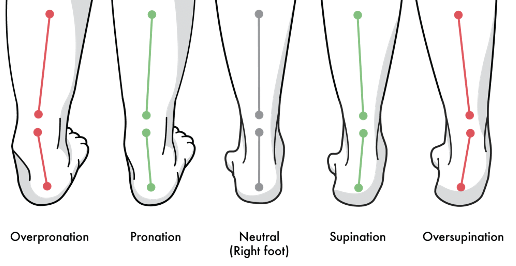Flat foot, also medically called Pes Planus, is a condition in which the arches of a person’s feet are not visible and the entire undersides of their feet contact completely onto the ground.

(From: http://boneandspine.com/overpronation-of-foot/)
Over 70% of the population in Australia have flat feet. Although some of the flat feet are “rigid” flat feet, which are inflexible, most of the flat feet are what is actually, and better, described as ‘flexible flat feet’. ‘Flexible flat feet’ do, technically, not have completely collapsed arches, although they may appear to be so while a person is standing, bearing their full weight. The arches of a person who has ‘flexible flat feet’ will typically reappear when they either stand on their heels, or when they pull their toes back whilst keeping the rest of their feet in contact with the ground.
Despite this fact, some people tend to wrongly call all feet that appear to be flat, as “flat foot”.
The condition of ‘flexible flat foot’ is, nonetheless, generally not a foot at its natural best. Such a condition can cause considerable foot pain, shin pain, knee pain, and lower back pain. The root cause of ‘flexible flat foot’ is excessive foot pronation. Another expression, that of ‘Flat arch’, and also known as lower-than-normal arch, is where the angle of the calcaneus (heel bone) is less than 42 degrees from the transverse plane.

(From: http://www.northsiderunners.com.au/fit-process)
How to find if we are flat footed, normal or high arched?
If assessed by a podiatrist Navicular Drop Test is usually used to precisely check if the foot arch is dropped or not.

However, it is actually pretty easy for us as a layman to check our foot arch. It would not be precise, but it can generally tell.
1.Finger test.
Stand still and relaxed with feet apart at your shoulders’ width. Ask our friend to try to snug our index finger into our foot arch. If we can easily our finger in it means it would not be a flat foot. If you cannot even push it in it means you may have a flat foot.

2.Check our feet from behind.
Stand still and relaxed with feet apart at your shoulders’ width. Ask our friend to check from behind. Look at the midline as reference. If it is straight, it means normal (neutral). If it curves inwards, it means flat foot (pronation). If it curves outwards, it means high arched (supination)


3.Check footprints.
Use a piece of white paper. Wet your foot and stand on it and walk away. Check the prints on the paper.

Flat feet in children
The arches of young children do typically not normally fully develop until they are about 10 years old. It is therefore normal and common for young children up to this age to have some degree of flat footedness. Furthermore, as little evidence has been found for their efficacy with such young users, it is generally not recommended that children younger than this age wear orthoses.
Rather, children with flat feet are encouraged to walk & play barefooted, especially over soft accommodating terrain, such as a beach or soft grass. Children, however, with rigid flat feet or fasciitis, are not recommended to go barefooted.
A medical study in India involving large numbers of children, some of whom who had grown up wearing shoes and others who had grown up barefooted, was particularly informative in regards to how we can naturally optimize the health & function of a child’s developing foot. It was found that not only were the longitudinal arches of the barefooters generally strongest and highest, but also flat feet were less common in children who had grown up wearing open sandals or slippers, in comparison to those who had worn closed-toe shoes.
Symptoms of Flat Feet
Many people with ‘flexible flat feet’ experience no pain or symptoms. Some ‘flexible flat footers’, however, experience symptoms including:
Foot pain
Heel pain
Ankle pain
Shin pain
Knee pain
Lower back pain
The excessive inward rolling of Flat Feet results in significant unnatural compensatory rotational forces, stresses & strains being exerted upon the bones, ligaments, tendons and soft tissues of the foot. These same compensating forces, however, then transmit upwards, resulting in similar stresses, strains & twisting forces being brought to bear on numerous of the ligaments, tendons, bones & muscles of each of the shin, knee, thigh, pelvis and lower back.
Contributing Factors
for Adult Flat Feet
– Injuries
– Unusual or prolonged stress and strain on the foot
– Faulty biomechanics
– Age
– Overweight/obesity
Treatment
of Flat Feet
The most effective treatment to correct over pronation is to wear quality orthotic footwear such as premium grade, over-the-counter orthotic shoes/thongs/sandals. This very simple & natural treatment will help most people with ‘flexible flat feet’.
People with rigid flat feet, however, may wish to seek specialist advice from either a medical or podiatric specialist.
